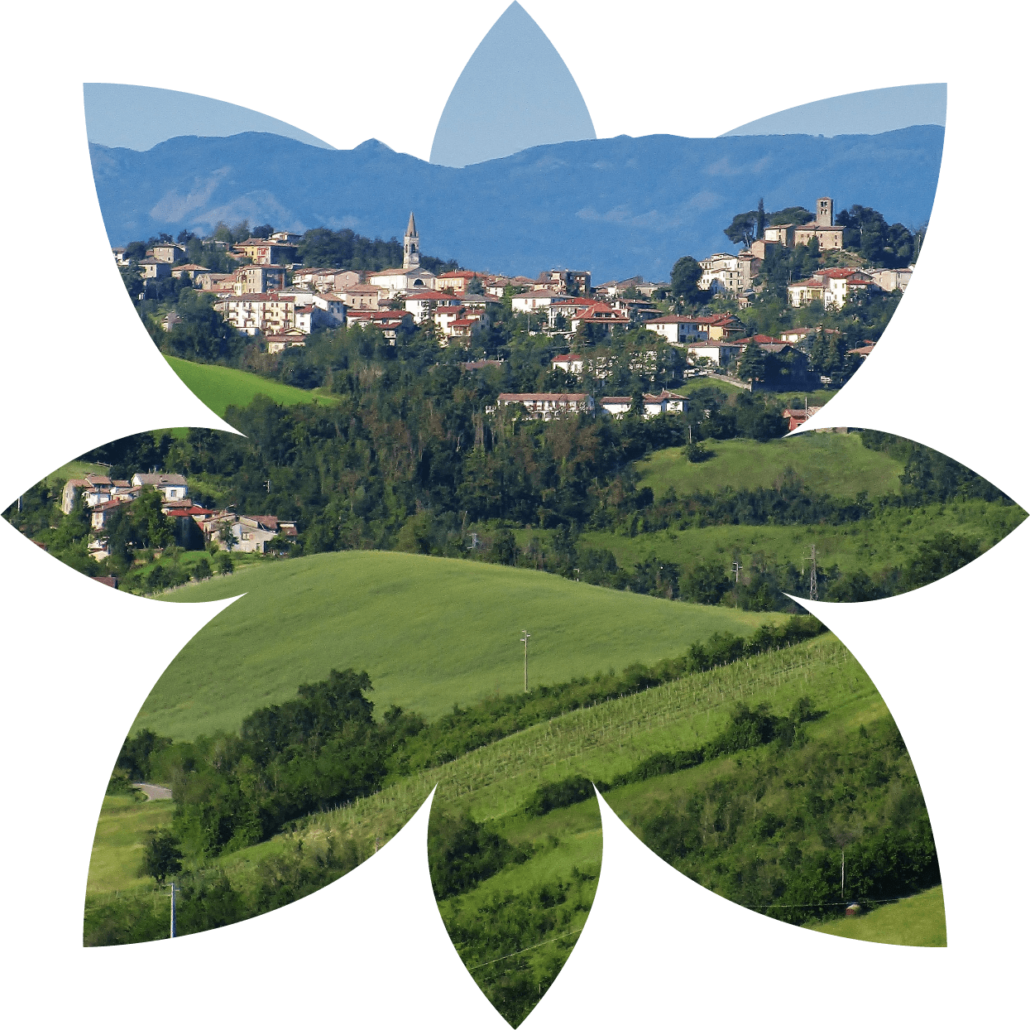VERNASCA AND ITS SURROUNDING AREA

The municipality of Vernasca occupies a narrow, elongated area on the border between the provinces of Piacenza and Parma and consists of the three parallel valleys of the Arda, Ongina and Stirone rivers. To the south, the territory is mountainous, dominated by forests and the large artificial lake formed by the Mignano dam.
The villages on this slope are typical rural hamlets consisting largely of old stone buildings, as in the case of Vezzolacca, Castelletto and Settesorelle.
VERNASCA
History
The Vernasca area, inhabited since the Neolithic period, was wrested by the Romans from the Ligurian populations settled here at the time of the conquest. To guard the valley, the Ligurians had erected a series of their fortified villages, the so-called ‘castellieri’, on the hills, built within sight of each other to allow information to travel fast. Traces of castellieri were found in Rocchetta di Carameto, Settesorelle and Casali di Morfasso. The castellieri system, which is still being studied and on which numerous hypotheses have been formulated, affected the entire Apennines of Piacenza and was a common prerogative of all populations of Celto-Ligurian stock in the area.
Following the Romans, after the period without historical records corresponding to the Early Middle Ages, the Vernasca area became part of the possessions of the Abbey of Val Tolla, presumably founded in the first half of the 7th century.
During this period, the village, still called ‘Lavernasco’ as in its original form, was endowed with a castle (10th century) by the Abbey. This fort is mentioned in a document in which Emperor Henry II granted a privilege to the Abbey itself.
The castle was purchased in 1029 by the Marquis Ugo di Provenza, then passed to the Malaspina family before returning to the Abbey (1048), whose destiny it followed: it was then passed with all its properties to the Sforza family of S. Fiora, it remained in vogue for a certain period as the seat of the judge of Val Tolla (together with the castle of Sperongia) and then fell into ruin when this civil function was transferred to Lugagnano. The Sforza di S. Fiora (Cesarini branch) family remained owners of the fief of Vernasca until the 18th century, but were deprived of their lands with the coming of Napoleon’s armies; during this period Vigoleno became a centre of resistance of the local peasants against the depredations and abuses of the French soldiers.
In 1815, the Municipality of Vigoleno was established, the territory of which corresponded to the present-day Municipality of Vernasca; it should be noted that at that time Vigoleno was a much more populous town than Vernasca. In 1851, however, on the initiative of Charles III of Bourbon, the municipal capital was permanently moved to Vernasca.
The parish church of San Colombano
Of the original features, Vernasca preserves the remains of the Romanesque Parish Church of San Colombano (12th century) with its bell tower and apse, now set in the pleasant context of a square-garden in the upper part of the town; the rest of the temple was demolished in the early 20th century, when it had already been rendered unsafe by a landslide. The new church was built in 1890, lower than the old parish church.
The surviving parts of the parish church, originally built on a three-nave basilica plan near the previous castle of Vernasca, are flanked by the ancient rectory that currently houses the Provincial Visitor Centre of the Via Francigena, a museum and educational space in which illustrative materials and historical artefacts concerning the Piacenza section of the pilgrimage route to Rome are collected on the ground floor. On the first floor, the frescoes that were removed from the apsidal walls of the old parish church are on display, including that of the ‘Crowned Madonna’. These frescoes, dating back to 1474, were detached and restored in 1969; they are now on public display here, after having been housed for years in the Town Hall premises.
THE SURROUNDINGS OF VERNASCA
EVENTS IN VIGOLENO
WE ARE IN THE UPPER VAL D'ARDA
The Alta Val d’Arda is the easternmost Apennine part of the valley in the province of Piacenza, bordering on the province of Parma.
It has the irresistible charm of a land waiting to be discovered: a treasure chest of history, art, nature and flavours, for those who love to travel far from mass tourism









